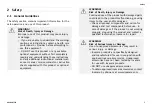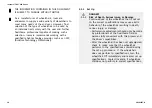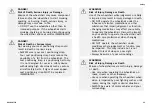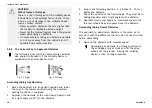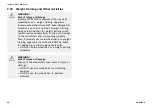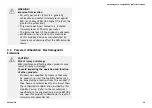
Invacare® TDX® SP2 Series
CAUTION!
Risk of Injury or Damage
There is a risk of falling out of the mobility device
if obstacles are not approached correctly. There
is also a risk of damage to the mobility device,
such as broken casters.
– Never approach obstacles that are higher than
the maximum climbable obstacle height.
– Never let the footrest/legrest touch the ground
when descending an obstacle.
– If unsure whether taking an obstacle is possible
or not, move away from the obstacle and if
possible find another location.
2.4.3 The Correct Way to Approach Obstacles
The following instructions for approaching obstacles
also apply to attendants if the mobility device is
equipped with an attendant control.
Fig. 2-1 Right
Fig. 2-2 Wrong
Ascending (Going Up) Obstacles
1.
Move the backrest into an upright position and lower
the seat to the lowest position using the powered
seating functions, if equipped.
2.
Approach the obstacle or the curb slowly, head-on and
at a right angle (or 90°) to the obstacle.
3.
Stop in the following position: 2–4 inches (5 - 10 cm)
before the obstacle.
4.
Check the position of the front wheels. They must be in
driving direction and at right angles to the obstacle.
5.
Approach slowly and keep at a consistent speed until
the rear wheels have also passed over the obstacle.
Descending (Going Down) Obstacles
The approach to descend an obstacle is the same as to
ascend it, with the difference that you do not need to stop
before descending.
1.
Descend the obstacle with medium speed.
Descending an obstacle too slowly could cause
the antitippers to get stuck and lift the drive
wheels off the ground. Driving the mobility
device is then no longer possible.
20
60101877-B
Содержание TDX SP2 series
Страница 86: ...Notes...
Страница 87: ...Notes...


